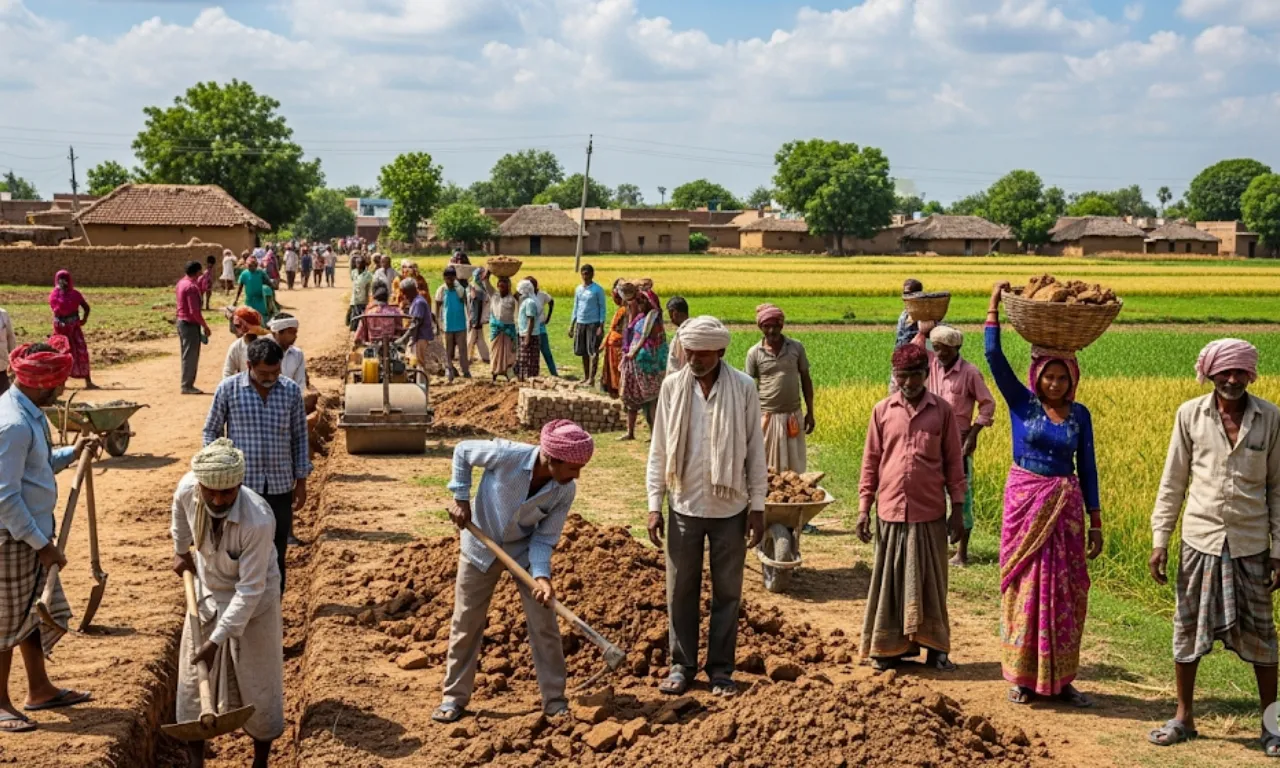- NITI Aayog is currently reviewing the Mahatma Gandhi National Rural Employment Guarantee Scheme (MGNREGS) to get approval for a Rs 5.23 lakh crore funding plan until 2029-30.
- Evaluation and audit studies help in measuring MGNREGS’s effect, guiding policy decisions, and making sure the scheme runs efficiently.
- MGNREGS demand was highest during the Covid-19 pandemic but has recently decreased, with differences in regions like a suspension in West Bengal.
NITI Aayog has conducted a comprehensive review of the Mahatma Gandhi National Rural Employment Guarantee Scheme (MGNREGS), shedding light on the current status, financial planning, and ongoing challenges of the flagship rural employment program. The review emphasizes efforts to ensure the financial sustainability of the scheme and provides insights into participation trends across states.
As one of the largest rural job schemes in the country, MGNREGS continues to play a crucial role in providing livelihood support, especially in rural and economically weaker regions. The latest analysis by the policy think tank is expected to guide future reforms and implementation strategies
NITI Aayog’s Evaluation Study and Why It Matters
The evaluation study of MGNREGS currently being done by the Development, Monitoring and Evaluation Office (DMEO) of NITI Aayog is an important step in making sure the scheme continues effectively. Started by the Government of India, MGNREGS aims to guarantee wage jobs to rural families. To keep getting funding for future rounds, including the next Finance Commission period, a careful independent review is required.
Details of the Review and Approval Process
The ongoing study plays a key role in getting approval from the Ministry of Finance’s Expenditure Finance Committee (EFC) for the proposal asking for Rs 5.23 lakh crore funding till 2029-30. According to current government rules, no centrally sponsored scheme can continue after March 31, 2026, without this thorough third-party review. Results from NITI Aayog’s study will affect budget approval and policy decisions for MGNREGS under the 16th Finance Commission cycle.
Past Audits and Committee Reports on MGNREGS
MGNREGS has been regularly checked and reviewed to make it better. Since the financial year 2013-14, the Internal Audit Wing (IAW) under the Office of the Chief Controller of Accounts has done Risk-Based Internal Audits across 225 districts in 30 states and Union Territories. These audits look at the scheme’s risks and governance quality.
Also, the Amarjeet Sinha Committee formed in 2021 deeply studied the reasons behind wage employment demand in rural areas. It looked at state-wise spending patterns and governance challenges. Some of its suggestions are being carried out, helping make MGNREGS stronger.
Importantly, the last NITI Aayog evaluation of MGNREGS happened in 2019-20, focusing on the scheme’s effectiveness, efficiency, impact, and sustainability. Combining these past insights with current findings helps make strong decisions for MGNREGS’s future.
MGNREGS Participation Trends and Effects on Rural Workers
Participation in MGNREGS has changed a lot since it started. The scheme began in 2006-07 covering 200 backward districts, expanded to 130 more districts in 2007-08, and from 2008-09 it reached all across India. It has played a big role in rural jobs and fighting poverty since then.
MGNREGS Growth and Response during Covid-19
During the Covid-19 pandemic in 2020-21, MGNREGS acted as a major social safety net for migrant workers coming back to villages during lockdowns. That year had a record 7.55 crore rural families enrolled under the scheme. This growth helped provide livelihood security to millions who lost urban jobs.
Also Read – PM Kisan 20th Installment Payment Issues and Eligibility Check Guide
Drop in Participation and Regional Differences
After the pandemic, participation has slowly decreased as the rural economy and job options have improved. Numbers dropped from 7.25 crore families in 2021-22 to 5.79 crore families in 2024-25. Also, some places like West Bengal have stopped MGNREGS since March 2022, showing different local governance and operational reasons.
| Year | Number of Rural Families (in crore) | Notes |
|---|---|---|
| 2020-21 | 7.55 | Peak during Covid-19 lockdown |
| 2021-22 | 7.25 | Slight drop as economy got better |
| 2022-23 | 6.18 | Continued decrease in participation |
| 2023-24 | 5.99 | Stable but lower than earlier years |
| 2024-25 | 5.79 | Lowest participation in recent years, includes pause in West Bengal |
MGNREGS is a scheme supported by law, and with the current review, the government wants to keep this rural job guarantee going with a bigger budget and better governance. If you use or support MGNREGS, following this evaluation will keep you updated on how the scheme changes in the next years.

